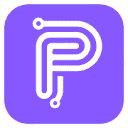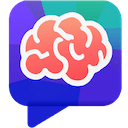
When users are still troubled by the “LLM Prompt expression fuzzy, difficult to adapt to industry scenes, lack of direction for creative tasks”, Google launched the official AI Prompt Library (Google AI Prompt Library), with “scenario-based classification, official verification, The official AI Prompt Library (Google AI Prompt Library) launched by Google, with “scenario-based classification, official validation, and full free open” three core advantages, has become a “bridge” connecting ordinary users with professional LLM capabilities. Whether it’s a workplace that needs to “generate structured meeting minutes” or a creator that needs to “design an immersive story framework”, the prompt library can provide accurate command templates that have been validated by Google, allowing “zero-experienced users to generate professional-grade LLMs”. The cue thesaurus can provide accurate command templates validated by Google, making “zero-experienced users can also generate professional-grade LLM output” a reality, and completely lowering the professional threshold of AI interaction.
Core positioning: from “scattered attempts” to “official standards”, defining a new benchmark for prompt word creation.
(i) Officially verified professionalism: ensuring accurate and effective instructions
- Adaptation to Google LLM: Optimized for Gemini series (Gemini 1.0/1.5/Pro/Ultra), PaLM and other official Google models, to ensure that the cue words can maximize the performance of the model, such as “data visualization and analysis” cue words can be accurately invoked. Gemini’s multimodal chart generation capability;
- Controllable output quality: each prompt template is labeled with “expected output effect”, for example, the “meeting minutes prompt” clearly states that “a structured document will be generated that contains ‘to-do items, responsible person, time and node’. node’ structured document”, the user can quickly determine whether to match the needs;
- Continuous iterative optimization: Synchronously update the prompt words with the upgrade of Google AI model, for example, after Gemini 1.5 supports longer context, the prompt word “long document summary” in the library is synchronously adjusted to “support 100,000-word document segment summary” to ensure the timeliness and adaptability. (ii) Scenario-based categorization.
(ii) Scenario-based categorization: covering the diversified needs of “personal + workplace + industry”.
- Basic general scenarios: including daily assistant (schedule planning, to-do list), learning assistance (summarizing knowledge points, generating exercises), creative creation (story framework, poetry writing), for example, “Generate 3 short story frameworks with environmental protection themes, including characters, conflicts, and endings! “;
- Workplace office scenarios: focus on high-frequency tasks such as meeting minutes, email writing, report analysis, project planning, etc. The prompts come with “structured output requirements”, e.g., “Meeting Minutes Prompts” contains “Attendees, core topics, Discussion conclusion, to-do items (responsible person + deadline)” module;
- Professional industry scenarios: covering education (courseware design, learning analysis), marketing (copywriting, user profiles), design (visual descriptions, style definitions), and data (analysis reports, visualization instructions), e.g., “Prompts for ‘User Profile Generation’ in the marketing scenario: ‘Based on product [XX], generate 3 types of target user profiles, including age, demand pain points, consumption habits, and reach channels'”;
- Multi-modal special scenarios: For Gemini’s multi-modal capabilities, it provides “Tips for combining graphics and text” (e.g., “Generate 3 versions of marketing copy based on the provided product images, highlighting the visual selling points”), “Tips for optimizing voice-to-text” (e.g., “Generate 3 versions of marketing copy based on the provided product images”), and “Tips for optimizing voice-to-text Optimization Tips” (e.g., “Transcribe meeting recordings into text, remove redundant expressions, and organize by ‘topic’ segments”).
(iii) Zero-threshold reuse and extension: everyone can get started quickly
- Variable template design: all prompts contain clear “variable placeholders” (e.g., [product name], [conference theme], [target audience]), so users can use them directly by simply replacing the variables, for example, “email composing prompts”: “In the name of [sender’s identity], send an email about [matter] to [recipient], containing background explanation, core demands, follow-up plan, and the tone is [formal / concise / cordial]”;
- Detailed instructions for use: each tip is accompanied by “applicable scenarios,” “output formats,” and “optimization suggestions,” e.g., “Data visualization tips ” labeled “applicable to Gemini Pro and above models, the output contains ‘chart type recommendations, data labeling requirements, export format'”, to avoid user misuse;
- Fully free and open: no need to register and log in, no limitation on the number of times of use, users can directly copy the prompt words to Google AI products (such as Gemini App, Google Workspace AI functions), taking into account the needs of individual and enterprise users.
Analysis of core panels and typical prompt words: covering 8 high-frequency scenarios
(I) Daily assistant section: solving the basic needs of life and study
- Schedule planning tips
- Template: “Help me plan my schedule for [date], including [Core 1, time XX-XX], [Core 2, time XX-XX], reserving [XX minutes] of flexible time, labeling the ‘priority (high/medium/low)’ and ‘preparation materials’ for each item. Preparation Materials’;
- Applicable scenarios: daily study plan for students, work schedule for professionals;
- Output effect: structured schedule with time points, priorities, and preparation lists to avoid missing key steps.
- Tips for summarizing knowledge points
- Template: “Summarize the core content of ‘[Knowledge Point Name]’ in [Subject / Domain], divided into 4 parts: ‘Definition, Key Elements, Common Cases, Error-Prone Points’, and each part is explained in 3-5 sentences, with concise and easy-to-understand language. The language is concise and easy to understand, and it is suitable for [junior high school / high school / university] learning stages.”
- Applicable scenarios: after-school revision for students, learning new skills for working people;
- Output effect: a logical and clear framework of knowledge points, which can be directly used for organizing notes or reviewing materials.
(ii) Workplace Office Board: Enhancing Office Efficiency and Professionalism
- Meeting Minutes Prompt
- Template: “Generate structured meeting minutes based on the discussion of [meeting topic], containing: 1. participants / absentees; 2. core topics (in order of discussion); 3. ‘Discussion conclusions, points of disagreement (if any)’ for each topic; 4. to-do items (responsible person, deadline, To-do list (responsible person, deadline, delivery standard); 5. Suggested time for the next meeting”;
- Applicable scenarios: regular project meetings, cross-departmental coordination meetings;
- Output effect: standardized minutes that can be distributed directly, reducing manual sorting time and making to-do items clear and traceable.
- Tips for writing emails
- Template: “In the capacity of [position, e.g., ‘Product Manager’], send an email to [recipient, e.g., ‘Client Leader’] about ‘[Subject, e.g., ‘Project Extension Note’]’. ‘Project Extension Explanation’]], containing:
1. background explanation (briefly describing the current progress of the project);
2. reasons for the extension (objective factors, e.g., ‘delayed arrival of core resources’);
3. adjusted plan ( Time nodes, remedial measures);
4. follow-up communication mechanism (e.g. ‘daily synchronization of progress’), in a formal and sincere tone, to avoid shirking responsibilities”;
- Template: “In the capacity of [position, e.g., ‘Product Manager’], send an email to [recipient, e.g., ‘Client Leader’] about ‘[Subject, e.g., ‘Project Extension Note’]’. ‘Project Extension Explanation’]], containing:
- Applicable scenarios: customer communication, cross-departmental synchronization, upward reporting;
- Output effect: the first draft of the email in line with business etiquette, users only need to add specific data to send.
- Data Analysis Report Tips
- Template: “Based on [data topic, such as ‘Q3 product sales data’], generate a brief analysis report, including:
1. comparison of core indicators (sales, growth rate, unit price) (with Q2 / the same period last year);
2. data trends (eg, ‘a product’) Data trend (e.g. ‘Sales of a product increased by 20% YoY, mainly from East China’);
3. Analysis of anomalies (e.g. ‘Sales of a product decreased by 15%, possible reasons: XX’);
4. 3 optimization suggestions, with ‘Data source description’ attached to the output. ‘”;
- Template: “Based on [data topic, such as ‘Q3 product sales data’], generate a brief analysis report, including:
- Applicable scenarios: sales review, operation analysis, financial reporting;
- Output effect: data-driven streamlined report, balancing conclusions and recommendations, supporting quick decision-making.
(III) Creative Creation Board: Inspiration and Content Output
- Story framework prompts
- Template: “Design a short story framework for ‘[theme, e.g. ‘space adventure’]’, including:
1. core characters (2-3, labeled with ‘identity, personality, goal’);
2. conflicts (2-3); and 3. 2. points of conflict (e.g. ‘The team has an energy crisis and needs to find new supplies within 24 hours’);
3. story pacing (beginning – development – climax – ending);
4. detailed descriptions of 2 key scenes (e.g. ‘The spaceship lands on an uncharted planet’), and a detailed description of the environment. The style tends to be [Science Fiction / Warmth / Suspense]”;
- Template: “Design a short story framework for ‘[theme, e.g. ‘space adventure’]’, including:
- Applicable scenarios: novel writing, script conceptualization, short video script;
- Output effect: a logical and complete story skeleton to help creators quickly develop details.
- Marketing Copywriting Tips
- Template: “Create 3 versions of social media marketing copy for [product name, e.g. ‘Wireless Noise-Canceling Headphones’], highlighting the core selling points:
1. [Selling point 1, e.g. ’40 hours of battery life’];
2. [Selling point 2, e.g. ‘Deep-sea noise reduction technology’];
3. [Selling point 3, e.g. ‘lightweight design’], each version of the copy is limited to 50 words, adapted to the style of [Xiaohongshu / Jieyin / Friends Circle] platforms, and contains ‘eye-catching opening + Scenario-based description of selling points + action instructions (e.g. ‘Click to learn’)”;
- Template: “Create 3 versions of social media marketing copy for [product name, e.g. ‘Wireless Noise-Canceling Headphones’], highlighting the core selling points:
- Applicable scenarios: brand promotion, e-commerce operation, self-media bandwagon;
- Output effect: diversified copywriting in line with the platform’s tone, taking into account attractiveness and conversion orientation.
(D) Multi-modal Interaction Board: Adapting Gemini’s multi-modal capabilities
- Picture description and creation prompts
- Template: “Based on the provided [image type, e.g., ‘product design image’], complete: 1. a detailed description of the image content (including ‘main elements, color matching, detail design’); 2. based on the image style, generate Based on the style of the picture, generate 2 ‘optimization plans for similar products’ with ‘modification parts and design reasons’; 3. write a slogan for the picture to highlight the visual highlights”;
- Applicable scenarios: product design review, visual marketing material optimization;
- Output effect: analysis and suggestions combined with graphics and text to help non-designers understand the visual content and propose optimization directions.
- Speech to text optimization tips
- Template: “Optimize the voice-to-text transcription of [scenario, e.g. ‘customer interview’].
1. Remove redundant expressions (e.g. ‘um, ah’ intonation, repetition of content);
2. ‘topic’ and label each paragraph with ‘core content’;
3. extract ‘customer needs, questions, objections’ and list them separately;
4. fix obvious grammatical errors, maintain a colloquial style, in line with the authenticity of the interview scene”;
- Template: “Optimize the voice-to-text transcription of [scenario, e.g. ‘customer interview’].
- Applicable scenarios: customer research, user interviews, meeting recording organization;
- Output effect: streamlined and structured transcription text, highlighting key information for subsequent analysis.
Third, the use of the process: three steps to unlock the professional-grade LLM output
(a) Step 1: Select the adapted scene and cue words
- Determine the demand scenario: Define the type of the current task (e.g., “workplace office → meeting minutes”, “creative writing → marketing copywriting”);
- Find the corresponding template: find the matching prompt word template in the categorized board of the prompt word library, e.g., “need to generate meeting minutes” then go to the “Workplace Office” board and select “Meeting Minutes Prompt”. “;
- Understand the structure of the template: check the “variable placeholders” (e.g. [meeting topic], [participants]) and “output requirements” in the prompt word to confirm whether it meets your needs.
(ii) Step 2: Replace variables and customize exclusive tips
- Supplementary variable information: Replace the variable placeholders in the template with specific content. For example, in the “Minutes Tip”, [Topic] is replaced with “Q4 Product Launch Preparation Meeting”, and [Attendees] is replaced with “3 people from Product Dept. 3 people from Product Dept, 2 people from R&D Dept, and 1 person from Ops Dept”;
- Adjustment details (optional): Fine-tune the prompts according to actual needs, such as changing “Formal tone” to “Simple and friendly tone” in the “Tips for writing emails” to fit internal team communication scenarios. Check Completeness: Make sure that all variables have been replaced;
- Check the completeness: Make sure that all variables have been replaced and there is no missing information (e.g., “responsible person and deadline for to-do list”) to avoid LLM output bias.
(iii) Step 3: Use in Google AI products
- Select adapted model: Open Google AI products (e.g. Gemini App, AI features of Google Workspace) and select the model adapted to the prompt word (e.g. “Data Analysis Prompts” recommended for Gemini Pro and above);
- Input prompt word: copy and paste the customized prompt word into the input box, click “Send”;
- Optimize the output (optional): If the LLM output does not meet the expectation, you can supplement the instruction based on the “Optimization Suggestion” of the prompt word library, for example, if the output of “Meeting Minutes Prompt” omits “To-Do”, you can add “To-Do”, which is not included in the output of “Meeting Minutes Prompt”. “, you can add “Please add the to-do items corresponding to each topic, including the responsible person and deadline”.
Relevant Navigation


AIPRM

PublicPrompts

Awesome ChatGPT Prompts

AI Prompt Genius

LangGPT

AI Short

PromptPerfect

